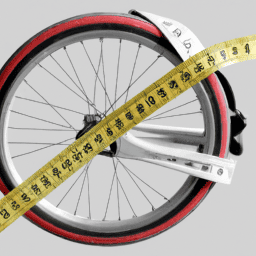Did you know that stationary biking can burn up to 600 calories per hour, making it an efficient workout choice for those looking to torch calories?
When it comes to using a bicycle effectively at the gym, there are several key factors to consider beyond just hopping on and pedaling away.
From selecting the right type of stationary bike to understanding proper form and technique, mastering the art of indoor cycling can lead to significant fitness gains.
Stay tuned as we uncover essential tips and tricks to optimize your gym cycling routine for maximum results.
Key Takeaways
- Proper bike setup for optimal performance
- Maintain correct posture to prevent injury
- Enjoy benefits like cardio fitness and weight management
- Take precautions to avoid common bike-related injuries
Types of Stationary Bikes
When selecting a stationary bike for your workout routine, it's essential to understand the various types available to find the best fit for your fitness goals and preferences.
Spin bikes are fantastic for high-intensity cardio workouts, with their lower-set handlebars and friction resistance flywheels.
If you're looking for a more comfortable option, recumbent bikes offer a reclined seating position, perfect for longer cycling training sessions.
Traditional upright bikes provide a classic cycling experience with their upright handlebars and padded seats.
Street bike trainers allow you to bring your outdoor bike indoors, maintaining the feel of riding on the road.
For those focused on budget-friendly options without compromising quality, folding indoor bikes are excellent choices for space-saving cardio workouts.
Understanding the different types of stationary bikes will help you tailor your workout to target major muscle groups effectively. Whether you're aiming for intense indoor cycling sessions or incorporating strength training for cyclists, selecting the right bike that promotes good posture and proper form is crucial for achieving your fitness goals.
Setting Up Your Bike Properly

To optimize your workout and prevent discomfort, ensure your bike is set up correctly by adjusting the saddle angle to support your body weight and positioning the seat and handlebars for proper alignment and efficiency.
- Adjust the Saddle Angle: This is crucial for distributing your body weight evenly and preventing strain on your muscles during the workout.
- Set the Seat Height: Make sure your seat is at the right height to avoid any unnecessary stress on your knees and to allow for a slight knee bend when your feet are on the pedals.
- Position the Seat Fore/Aft: Proper alignment of the seat is essential for efficiency in pedaling. Ensure your knees are in line with the pedal axle for optimal muscle engagement and power output.
Correct Posture for Bike Workouts

Maintain a strong and aligned posture throughout your cycling workout to optimize your performance and protect your body from unnecessary strain. Correct posture is essential for engaging lower body muscles effectively and preventing injuries. Follow these guidelines to ensure you are in the right position during your bike workout:
| Posture Tip | Description |
|---|---|
| Sit on the widest part of the saddle | This helps distribute your weight evenly and reduces discomfort. |
| Keep feet flat on the pedals | Avoid putting too much pressure on your knees by maintaining a flat foot position. |
| Maintain a straight spine | Keeping your back straight reduces the risk of back pain and enhances efficiency. |
Remember to engage your core muscles by slightly leaning forward at the hips, but avoid hunching over. Keep your elbows slightly bent and shoulders relaxed to prevent neck strain. By following these posture tips, you'll not only improve your cycling workout but also enjoy a more comfortable and effective exercise experience.
Benefits of Stationary Bike Exercise

Transitioning from maintaining correct posture in bike workouts, reaping the benefits of stationary bike exercise can significantly enhance your overall fitness and well-being. Embrace the advantages of indoor cycling on a stationary bike:
- Cardio Excellence: Pedaling away on a stationary bike elevates your heart rate, enhancing cardiovascular fitness and boosting heart health. Feel the rush of endorphins as you conquer your workout and improve your overall well-being.
- Weight Management: Regular sessions on a stationary bike can aid in shedding those extra pounds and maintaining a healthy weight. It's a fun and effective way to burn calories while enjoying a low-impact workout that's gentle on your joints.
- Rehabilitation Support: For individuals recovering from knee injuries, the stationary bike is a valuable tool for rehabilitation. Its low-impact nature promotes joint health and helps in the healing process, providing a safe and convenient option for staying active during recovery.
Get on that bike and pedal your way to fitness and health!
Preventing Common Bike Injuries

Let's focus on staying injury-free while cycling by implementing proper bike setup techniques for a safer and more enjoyable ride. To prevent common bike injuries, it's crucial to pay attention to details like saddle height and handlebar positioning. Ensuring proper saddle height for correct knee alignment can prevent knee strain, while sitting on the widest part of the saddle with relaxed shoulders helps avoid neck and back pain. Using pedal clips or straps enhances foot stability, reducing the risk of foot injuries. Before hopping on the bike, remember to warm up to prevent muscle stiffness and potential strains or sprains.
Here's a quick reference table to guide you in preventing injuries during your cycling sessions:
| Aspect | Importance | Tips |
|---|---|---|
| Bike Seat | Proper adjustment crucial for comfort and injury prevention | Adjust height for correct knee alignment |
| Upper Body | Keep shoulders relaxed to prevent neck and back pain | Sit on the widest part of the saddle |
| Lower Body | Ensure proper knee alignment to avoid strain | Use pedal clips for foot stability |
| Warm Up | Essential to prevent muscle stiffness and injuries | Adjust handlebars and seat position for comfort |
Frequently Asked Questions
What Is the Best Way to Ride a Bike at the Gym?
Riding a bike at the gym is all about adjusting the seat height, maintaining good posture, playing with resistance levels, pedaling smoothly, and monitoring your heart rate. Let's pedal with purpose and make every workout count!
How Effective Is the Bike at the Gym?
We pedal hard, breaking barriers, chasing victories. The bike at the gym? It's a powerhouse, torching calories, sculpting muscles, and boosting heart health. We conquer every mile, every resistance level, proving our strength.
How Long Should I Bike at the Gym?
We should aim for at least 30 minutes of cycling at the gym to maximize cardiovascular benefits and calorie burning. Gradually increasing biking duration to 45-60 minutes enhances endurance and weight management. Adjust based on fitness goals.
Is It OK to Cycle to the Gym?
Cycling to the gym is not just okay; it's a fantastic choice! We save time, get a cardio warm-up, and boost our fitness. Plus, it's eco-friendly. Let's pedal our way to health and happiness!
Conclusion
So, next time you hit the gym, remember that using a stationary bike can be a great way to get a low-impact cardio workout while targeting various muscle groups.
Don't be discouraged by the initial setup process – once you find the right bike and adjust it properly, the benefits are endless.
Push through any discomfort and trust the process – you'll be on your way to a stronger, healthier you in no time!









